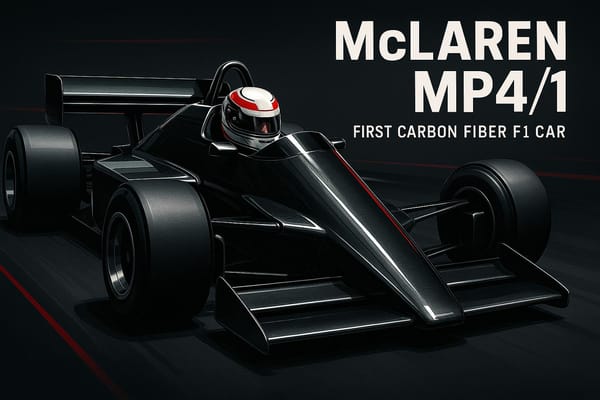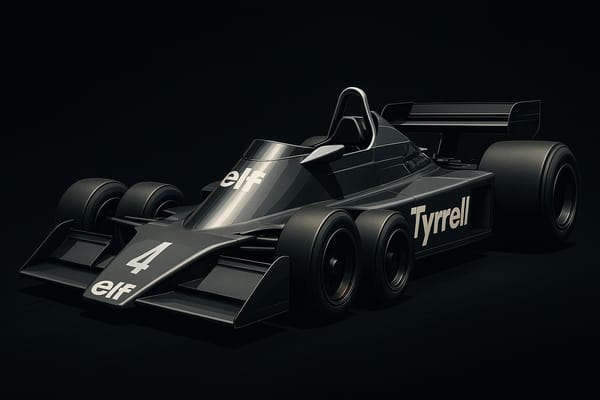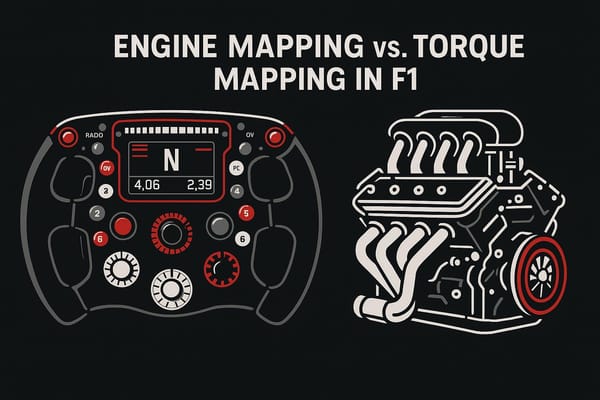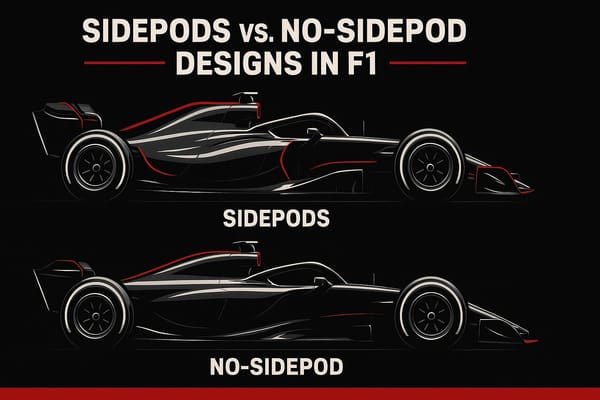High Speed Meets Heat: Everything You Need to Know About the 2025 Spanish Grand Prix
The 2025 Spanish Grand Prix showcased extreme heat challenges, tire management strategies, and a thrilling McLaren 1-2 finish under demanding conditions.
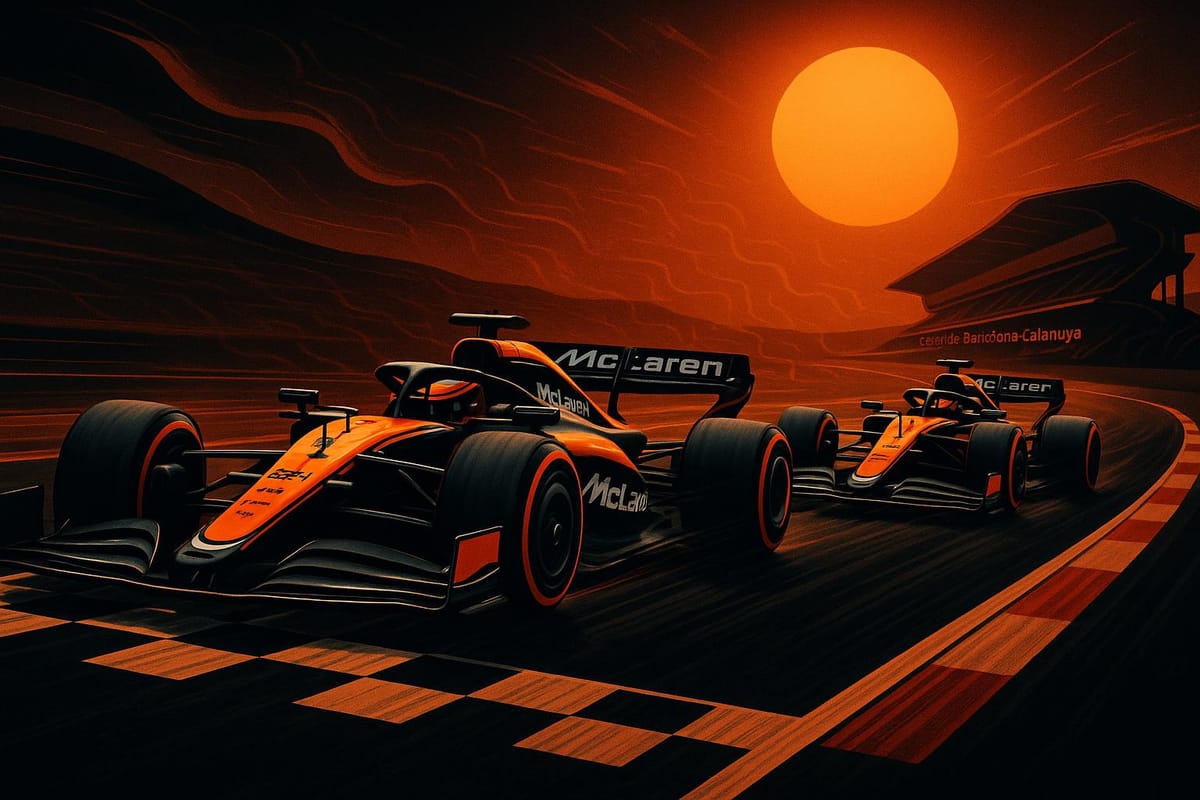
The 2025 Spanish Grand Prix tested drivers and teams with extreme heat and a tough track. Air temperatures hit 118°F, cockpit temperatures soared to 140°F, and drivers lost up to 6.6 pounds in sweat. The Circuit de Barcelona-Catalunya, with its 2.89-mile layout and demanding corners, pushed cars and drivers to their limits. Key takeaways:
- McLaren dominated with a 1-2 finish by Oscar Piastri and Lando Norris, showcasing excellent tire management.
- Red Bull took risks with a three-stop strategy but couldn’t match McLaren's pace.
- Tire degradation was critical, with Pirelli’s hardest compounds struggling on the overheated asphalt.
- Aerodynamic and cooling updates were vital, as teams adapted to stricter regulations like TD018.
The race highlighted the importance of balancing speed, tire longevity, and cooling in extreme conditions. McLaren’s strategy and execution stood out, setting a high bar for the rest of the season.
Circuit Overview: The Demands of Circuit de Barcelona-Catalunya
Track Layout and Key Features
The Circuit de Barcelona-Catalunya, which opened in 1991, spans 4.657 kilometers (2.894 miles) and is known for its mix of long straights and varied corners that push Formula 1 cars to their limits. Its asymmetrical design - featuring six left-hand turns and eight right-hand turns - results in uneven tire wear, a challenge that becomes even tougher under the region's intense heat. The 613-meter straight from the start line to Turn 1 is one of the longest in the sport, creating prime opportunities for overtaking.
Turn 3 is a standout feature - an uphill, sweeping right-hander that generates around 4 G-forces, putting immense pressure on the tires. Tailwinds in this section can exacerbate the difficulty, forcing drivers to carefully manage their speed to avoid overheating their tires. Another highlight is Turn 9, known as Campsa, a high-speed, sixth-gear right-hander. Its blind exit demands precision and confidence as drivers stick to the racing line without a clear view of what's ahead.
"It's a proper race track, and this is where a Formula One car comes alive." – Max Verstappen
In 2023, the circuit underwent a significant update with the removal of the chicane in the final sector. This adjustment created a faster, more fluid layout, enhancing overtaking opportunities while presenting new challenges in tire management. These changes, combined with the track's demanding nature, mean that temperature plays a critical role in performance.
How Temperature Affects Track Conditions
With track temperatures reaching as high as 114.6°F (45.9°C), the abrasive surface at Barcelona accelerates tire wear, particularly on the front-left tire due to the track's asymmetrical design. The intense heat speeds up thermal degradation, pushing tires beyond their optimal performance range.
Turn 3 becomes especially tricky in these conditions. The sustained load on the tires during this uphill stretch can lead to overheating before drivers even reach the final sector. To mitigate this, teams often instruct drivers to adjust their speed through Turn 3 during qualifying laps, prioritizing tire preservation over outright speed.
"The expected high temperatures in Barcelona in mid-August will increase thermal degradation on a track already well-known for being tough on tyres, so it's going to be particularly important to manage them and control any overheating that affects traction." – Pirelli chief Mario Isola
Looking ahead to the 2025 Spanish Grand Prix, Pirelli has responded to these challenges by selecting their hardest tire compounds (C1, C2, and C3). Even with these durable options, the extreme heat and demanding layout may push teams to reconsider their strategies, potentially opting for three pit stops instead of the usual two.
Track History and Recent Changes
Since its debut, the Circuit de Barcelona-Catalunya has been a cornerstone of Formula 1, serving as a key testing ground where teams fine-tune their setups and gather valuable data. Over the years, the circuit has undergone several changes to keep pace with the evolving demands of the sport.
One of the most notable recent updates came in 2023 with the removal of the chicane in the final sector. This change resulted in a smoother, faster layout that, while offering some relief in terms of traction challenges, has increased the strain on left-hand tires due to the new corner sequence.
"I hope that we're able to follow, with the cars we have, a bit better through the last two corners than we have (through) the little Mickey Mouse chicane." – Lewis Hamilton
Adding to the complexity is the circuit's unpredictable wind conditions. Sudden shifts in wind direction can disrupt aerodynamic balance, sometimes leading to on-track incidents. As Carlos Sainz puts it:
"This track tests every part of the car. It's a proper benchmark circuit." – Carlos Sainz
These updates and challenges continue to shape the strategies teams employ, making Barcelona a true test of both driver skill and engineering prowess.
The 2025 F1 Spanish Grand Prix WINNERS & LOSERS
Race Strategies: Dealing with Heat and Speed
Barcelona’s track presents a unique challenge. The combination of intense heat and high-speed demands forces teams to rethink their race strategies from the ground up. Striking the right balance between speed, tire longevity, and system reliability becomes a make-or-break factor. Let’s dive into how teams tackle these hurdles through tire strategies, cooling systems, and fuel management.
Tire Management and Pit Stop Plans
The scorching temperatures in Barcelona put immense stress on tires, making wear rates skyrocket. Teams are often caught between two choices: a two-stop strategy for faster lap times or a one-stop approach to gain track position despite the risk of severe tire wear.
Take the 2021 Spanish Grand Prix, for example. All top-ten drivers started on soft tires, but Mercedes held an advantage with two sets of medium tires available, compared to Red Bull’s single set. With pit stops costing around 22 seconds each, teams outside the top ten sometimes gamble on a one-stop strategy, banking on track position even as their tires degrade later in the race.
Cooling Systems and Technical Solutions
In Barcelona’s blistering heat, keeping engines and gearboxes cool is a technical puzzle. Cooling systems must strike a delicate balance between maintaining aerodynamic efficiency and dissipating heat effectively. Modern systems rely on pressurized coolants to manage engine and gearbox temperatures, which can soar past 2,600°C in engine gas temperatures.
To adapt to the track’s specific demands, teams tweak cooling setups by adjusting removable cooling panels and using asymmetrical sidepod outlets. These small but crucial modifications help ensure the cars can endure the intense conditions without compromising performance.
Fuel and Engine Performance in High Heat
Fuel efficiency and engine management are equally critical under Barcelona’s punishing conditions. Today’s F1 engines, 1.6-liter V6 turbo units, deliver 850 horsepower while completing races on just 110 kg (36.7 gallons) of fuel. Advanced techniques like rapid combustion and lean-burn strategies allow teams to stretch fuel efficiency without losing power.
These technical advancements don’t just conserve fuel - they play a pivotal role in determining race outcomes, especially on a track as demanding as Barcelona.
Driver and Team Performance Analysis
The 2025 Spanish Grand Prix was a showcase of strategic brilliance and on-track execution, with McLaren's commanding performance standing in contrast to Red Bull's bold, risk-taking approach. The race highlighted how different strategies can thrive - or falter - under Barcelona’s demanding conditions. Let’s dive into how these tactical choices translated into on-track results, shaping the race's key outcomes.
Top Performers: Drivers and Teams
McLaren’s Seamless Execution
Oscar Piastri and Lando Norris delivered a flawless 1-2 finish, a testament to McLaren’s exceptional race strategy and calm execution under pressure. Piastri’s win wasn’t just about starting from pole - it was about managing the race with precision. His ability to maintain speed while conserving tires in Barcelona’s punishing heat was the cornerstone of his victory.
A closer look at tire management revealed the difference between the two McLaren drivers. Piastri excelled in conserving his tires during the second stint, enabling him to push harder when it mattered most. Norris, while securing second place, faced challenges with understeer and tire degradation, which prevented him from matching his teammate’s pace.
Red Bull’s Aggressive Counterattack
Max Verstappen and Red Bull Racing took a bold approach, opting for a three-stop strategy to challenge McLaren’s tire management advantage. Christian Horner, Red Bull’s Team Principal, explained the reasoning behind this move:
"Given how the race was unfolding, we chose to make three stops. We made that decision fairly early because we saw that in a direct battle it wouldn't be possible to counter the pace and tyre-management advantage McLaren had."
While the strategy didn’t deliver a win, it demonstrated Red Bull’s willingness to take calculated risks in the face of a performance gap.
Key Race Moments and Incidents
A Strategic Battle of Wits
One of the race’s defining moments came early when Verstappen made an aggressive pit stop, forcing McLaren to adapt their plan. McLaren’s decision to stay measured and avoid reacting immediately proved decisive. As Randy Singh, McLaren’s Racing Director, noted:
"We knew the race would be fairly deterministic, as it was last year, and so when Verstappen pitted early, we let him go and tried to perform a better strategy to beat him."
This calculated response allowed McLaren to maintain track position while carefully managing tire degradation for the long haul.
Late-Race Safety Car Shake-Up
A late-race safety car brought the field closer together, adding an element of unpredictability to the final laps. This moment tested the strategies of both teams, but McLaren’s superior tire management during the restart ultimately gave them the edge.
Moments of Doubt for McLaren
Even McLaren faced moments of uncertainty during the race. Andrea Stella, McLaren’s Team Principal, shared:
"At one point, we even told our drivers they would have to push more. And both of them responded with something like: 'I'm not sure I have much more pace than this.' At that point, we were a little concerned that the situation might be more open than we had anticipated during the first stint."
This candid insight underscores the intense pressure both drivers faced while navigating Barcelona’s challenging conditions.
Performance Data and Comparisons
The race data paints a clear picture of McLaren’s technical edge. Piastri clocked the fastest lap of the race at 1m15.743s on Lap 61, narrowly beating Norris’s best time of 1m16.187s on the same lap. These numbers highlight McLaren’s ability to maintain a consistent pace advantage throughout the event.
Pit Stop Efficiency
| Driver | Team | Strategy | Key Pit Stop Times |
|---|---|---|---|
| Oscar Piastri | McLaren | 3-stop (laps 22, 49, 55) | 2.3s, 3.3s, 3.9s |
| Lando Norris | McLaren | 3-stop (laps 21, 48, 55) | 2.9s, 2.3s, 2.2s |
Despite Pirelli bringing their hardest compounds (C1, C2, C3) to manage the high tire degradation, the soft tire emerged as the top-performing compound of the race. McLaren’s triumph was not just about having a fast car - it was about executing a well-rounded plan that balanced speed, tire management, and strategic foresight under some of the season’s toughest conditions.
Technical Developments and Future Impact
The 2025 Spanish Grand Prix highlighted how teams adapted their designs to meet stricter regulations while tackling the challenges of high-speed racing in extreme heat.
Aerodynamic and Cooling Upgrades
One of the key changes came with the introduction of TD018, a technical directive that tightened rules on front wing flexibility. The allowable vertical deflection was reduced from 15 mm to 10 mm, and the trailing edge flex was cut from 5 mm to 3 mm. This forced teams to rethink and redesign critical aerodynamic components.
McLaren responded by modifying their front wing, shortening flap overhangs and reinforcing junctions to increase stiffness while maintaining tip vortex generation.
Ferrari made significant adjustments to their front wing, revising both chordwise and spanwise loading, updating endplates, and adding tip rolls to improve airflow. They also reworked their rear wing geometry to enhance tip vortex quality.
Mercedes took a different approach, focusing on their car's floor. They enlarged the floor-edge wing and added vanes to improve airflow beneath the forward floor. They also introduced updated inboard fences and a redesigned high-camber mainplane for the rear wing.
Williams tackled both aerodynamic and thermal challenges. Alongside changes to rear flap geometry and endplate camber to reduce deflection, they introduced new cooling solutions, including revised brake duct exits and an optional maximum-louvre panel to improve radiator airflow.
The stricter front wing tests for the Spanish Grand Prix reduced deflection under a 1 kN (220 lbf) load from 0.39 inches to 0.20 inches. Teams like Haas had to completely rebuild their front wings to comply with these new standards and pass TD018 tests.
These updates demonstrate the continuous push to balance aerodynamic performance with regulatory demands.
Balancing Downforce and Drag
The race showcased the ongoing challenge of balancing downforce with drag reduction. Modern F1 cars generate approximately 1,650 pounds of downforce, and managing this efficiently at high speeds requires precision engineering.
Red Bull refined their front wing by stiffening the first and second elements and tweaking the flap tips to maintain outwash efficiency. Racing Bulls, on the other hand, reworked their mainplane by lowering the central section, reshaping the nose tip, and adjusting endplate-tip transitions to reduce vortex loss.
Interestingly, data shows that downforce decreases by 35% at a 65-foot gap and by 44% at a 33-foot gap.
Paul Lucas from Verus Engineering emphasized the importance of aerodynamics in F1:
"Everybody knows the reason Formula 1 cars are so fast is because of their aerodynamics... If you don't get the aerodynamics right, you're not going to be a top-level car that year."
Sauber also demonstrated the integrated nature of modern F1 development, introducing updates like reworked floor fences, tweaks to outboard edges, and reshaped diffusers. They optimized airflow by redesigning the engine cover and coke bottle area while refining the front wing endplate.
This constant balancing act between downforce and drag not only defines current performance but also sets the stage for future innovations.
What This Means for Future Races
Building on these advancements, new regulations for the 2025 season will further push teams to innovate. One major change is the mandatory introduction of driver cooling kits for races classified as heat hazards. This decision addresses safety concerns, such as the 2023 Qatar Grand Prix incident where Alpine’s Esteban Ocon vomited in his helmet due to extreme heat.
The FIA’s technical commission explained the move:
"The commission has approved a range of technical changes for the 2025 season including the introduction of a driver cooling kit when heat hazard gets declared following encouraging test results."
With cockpit temperatures often reaching 122°F to 140°F (50–60°C) and drivers losing 4.4–6.6 pounds of body weight through sweat during races, effective cooling systems are becoming as critical as aerodynamic efficiency.
Looking ahead to 2026, regulations targeting a 55% reduction in drag will push teams to refine their designs even further. The engineering solutions developed for TD018 compliance at the Spanish Grand Prix provide a solid foundation for meeting these ambitious goals.
Additionally, advancements in computational fluid dynamics (CFD) analysis, powered by increased computing capabilities and machine learning, will help teams fine-tune the balance between cooling, aerodynamics, and compliance.
The technical progress showcased in Barcelona reflects F1's relentless drive toward creating faster, safer, and more efficient racing machines capable of thriving in diverse conditions.
Conclusion: Key Takeaways from Barcelona
The 2025 Spanish Grand Prix delivered some defining moments that could shape the rest of the season. Oscar Piastri’s commanding pole-to-win performance cemented McLaren’s status as the team to watch. His seamless execution under pressure, paired with Lando Norris’s second-place finish, showcased a masterclass in strategy and technical precision. Together, their results highlighted the immense value of meticulous planning and adaptability in challenging conditions.
"I'm really happy to have won today. It was a great weekend overall. The pace was really good. We could turn it on when we needed to", Piastri said after his victory.
This race brought tire strategy into sharp focus, especially in managing the intense heat. Mario Isola of Pirelli confirmed the Soft tire's standout performance:
"As happened last year at this track, the Soft turned out to be the most competitive tyre, maybe even more so than in 2024. In terms of degradation, the data we saw today is pretty much in line with what we got from Friday free practice, namely that it was significant but manageable".
Drivers pushed the limits, extending Soft tire stints even with full fuel loads, while others managed to stretch Medium compounds beyond 30 laps. This ability to adapt tire strategies will be critical as teams face similar scorching conditions in the months ahead.
Ferrari also had a moment in the spotlight with Charles Leclerc’s podium finish. His ability to capitalize on Safety Car opportunities showed Ferrari’s strategic potential, though lingering issues with tire balance between stints exposed areas for improvement. The aerodynamic and cooling upgrades mentioned earlier played a pivotal role in enabling teams to handle the intense demands of the race.
The race also spotlighted rising talents. Nico Hulkenberg’s fifth-place finish - his best result since the 2019 Italian Grand Prix - boosted Stake’s Constructors’ standings. Meanwhile, Isack Hadjar’s consistent points finishes fueled speculation about a potential move to Red Bull.
"It was one of those Sundays where everything came together really well. Right from the beginning, we were in the mix - a strong start, a clean first lap, and we were immediately able to fight for points", Hulkenberg reflected on his performance.
With 24 of the last 34 Spanish Grand Prix races won from pole position, Piastri’s victory underscored the critical role of qualifying on high-speed circuits. McLaren’s dominant one-two finish sent a clear message to their competitors, setting the tone for the battles ahead.
As teams gear up for the grueling summer schedule, the lessons from Barcelona - balancing aerodynamic efficiency with thermal management - will be vital. These takeaways not only define the challenges of this race but also provide a roadmap for teams navigating the high-stakes, high-temperature races to come.
FAQs
How did McLaren excel at the 2025 Spanish Grand Prix despite the extreme heat?
McLaren's triumph at the 2025 Spanish Grand Prix was the result of sharp strategy, smart tire management, and a car built to excel in intense heat. While many teams faced challenges like overheating and rapid tire wear, McLaren's engineering team fine-tuned the cooling systems and adjusted the car's setup to maintain steady performance in the punishing conditions.
On top of that, their drivers delivered a masterclass in race execution, skillfully balancing aggressive driving with efficiency to get the most out of their machines. This combination of preparation and precision gave McLaren the edge over competitors, allowing them to navigate the circuit's unique demands and the extreme weather with confidence.
How did teams adjust their cars to meet the new TD018 regulations during the 2025 Spanish Grand Prix?
Teams introduced several updates to meet the TD018 regulations and tackle the specific challenges of the Spanish Grand Prix. Among these were aerodynamic tweaks, including adjustments to the front wing and floor, aimed at boosting downforce and streamlining airflow. On top of that, cooling systems and brake ducts were reengineered to withstand the extreme heat while ensuring peak performance.
Tire management was another essential focus, as teams worked to balance speed and durability on the circuit's abrasive surface. The strategy revolved around minimizing wear while maintaining competitive lap times, all while navigating the demands of high temperatures and evolving technical regulations.
How will the recent updates to the Circuit de Barcelona-Catalunya affect tire strategies and race results?
The recent updates to the Circuit de Barcelona-Catalunya, along with the return of the hardest tire compounds (C1, C2, C3), have reshaped how teams approach their race strategies. Known for its high tire wear and challenging layout, this track often nudges teams toward a two-stop strategy to strike a balance between speed and tire durability.
Tire management has taken on even greater importance, especially with the heat of the Spanish climate causing tires to overheat and lose performance. Teams are now laser-focused on preserving tire life during critical stints while fine-tuning pit stop timing to stay competitive. These strategy shifts are set to heavily influence the race results.

